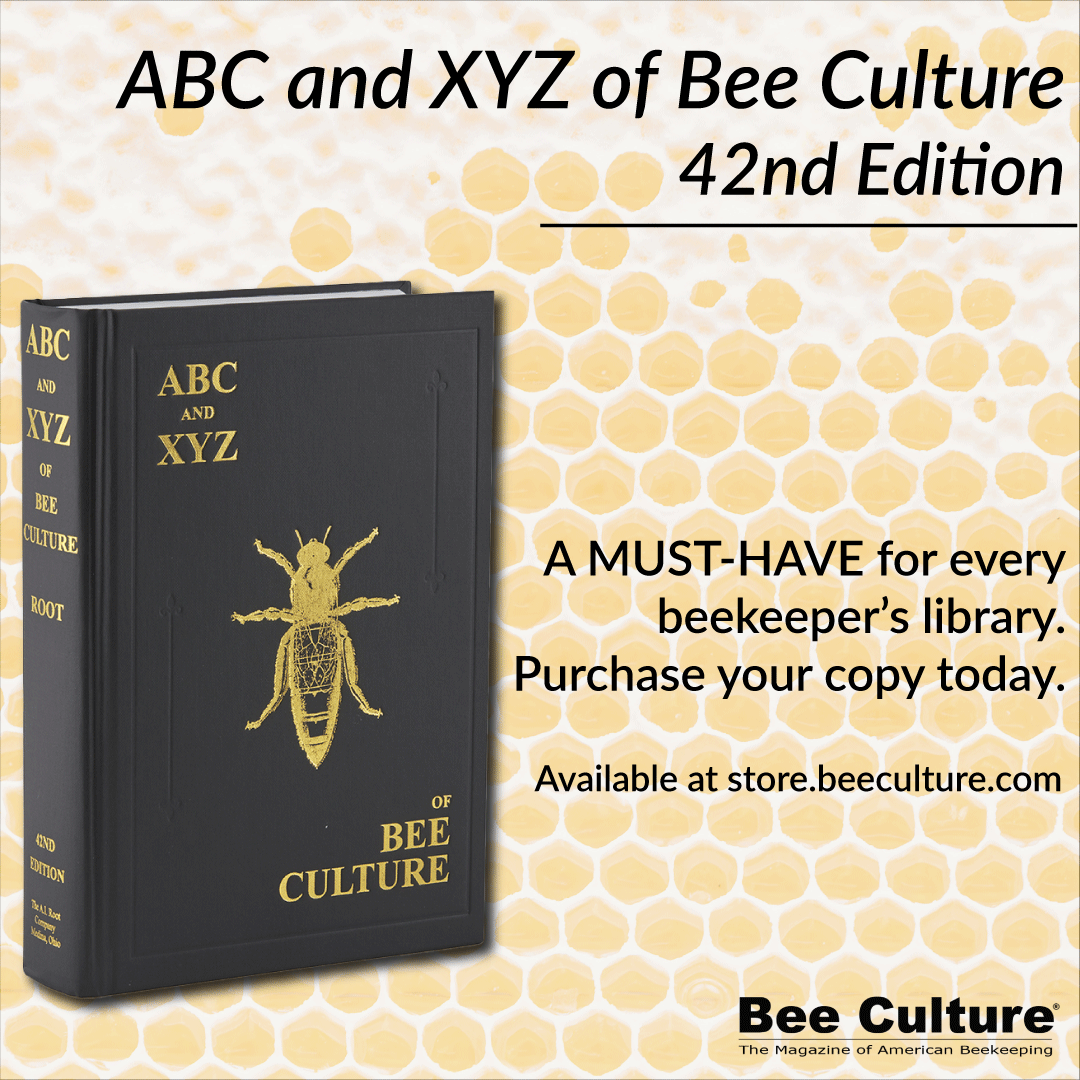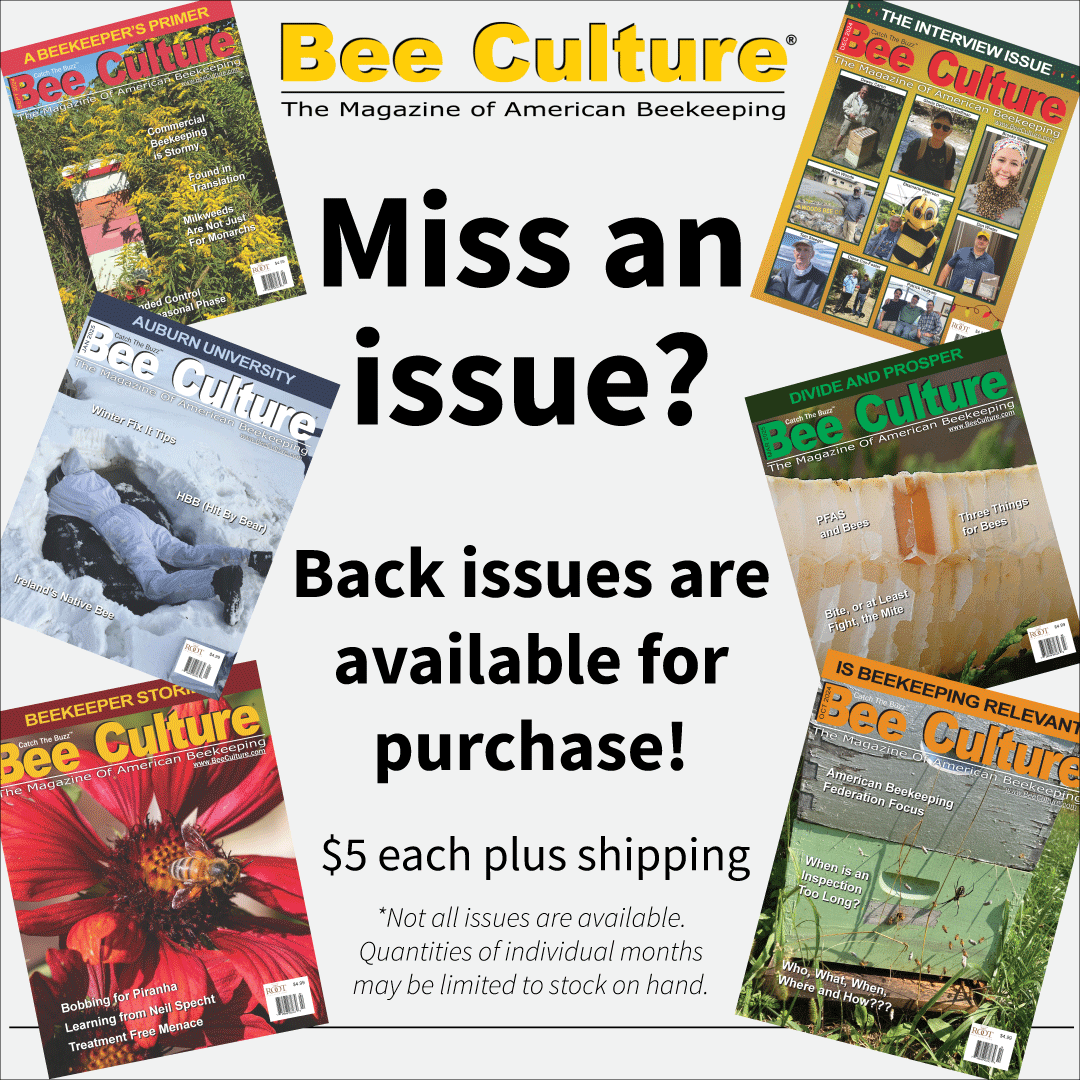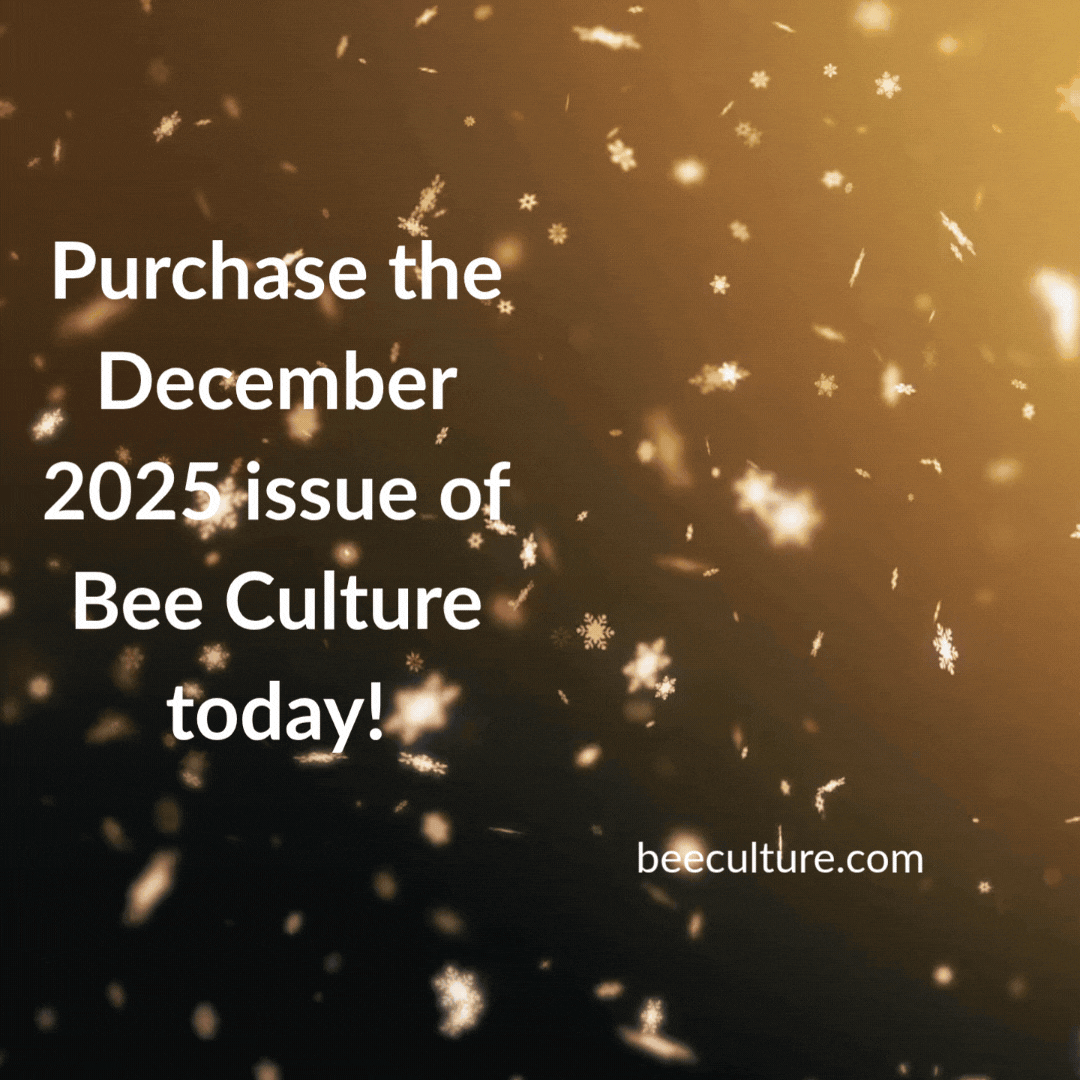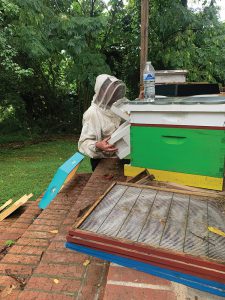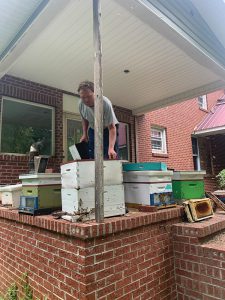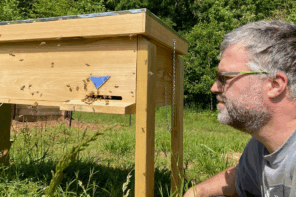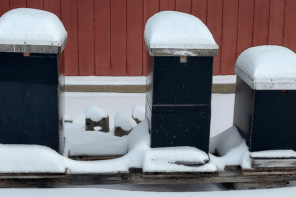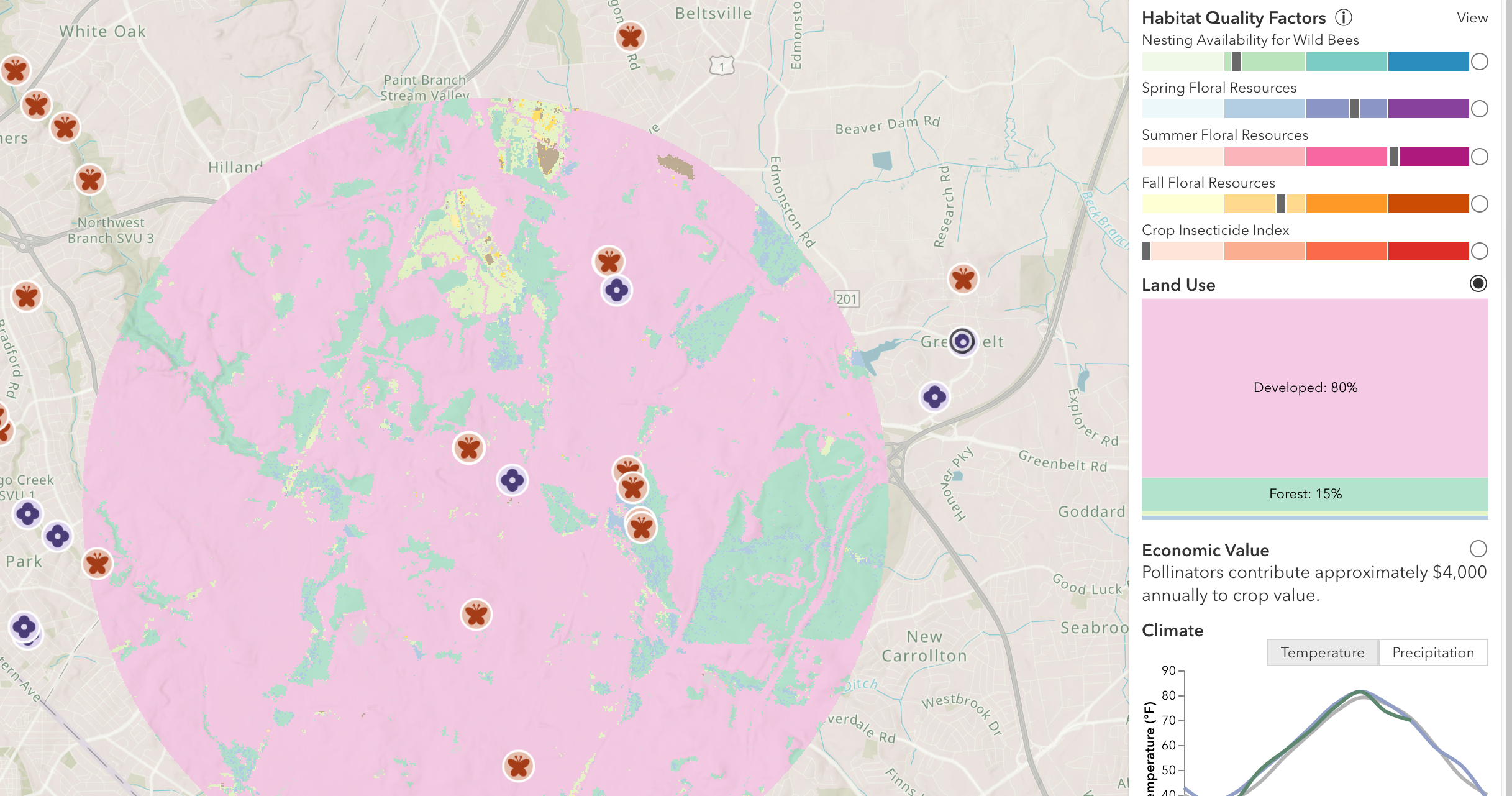Fall Bees
Jessica Lawrence
For some reason, it seems like I’ve talked to more beekeepers than normal lately about their odd beekeeping habits. I think one of these is because of hanging out with Beamon, my Virginia beekeeper, and we don’t necessarily agree on a lot of ideas. The thing is, I never really appreciated how much information you pick up from going to bee meetings, reading bee magazines, or conversing with other beekeepers. Not all of that information is good, or useful, but it is still good to know what’s out there. It’s also good to remember that there’s a lot of different ways to keep bees, and as long as your bees aren’t dead, then you’re doing okay. I’ve been off and on arguing with Beamon over some of his beekeeping ideas, but in reality his bees look pretty good and his queens are big girls with good brood patterns, so he doesn’t really need my advice from the looks of it.
My beekeeping is a lot different from the average hobbyist because most of the things I do are for consistency on a large scale and I don’t really have a lot of time to try out new ideas because the bees are usually already in a study and there’s no room for variables or things that might be a detriment. There’s a lot of things I take for granted that are ingrained just from so many years working in the field with bees in science that I just don’t think about when I talk to other people. For example, how many hives can successfully stay in one area? What’s the maximum number of hives before you reach overpopulation? Bees may be able to forage for a pretty good distance, but you can overpopulate an area. Sometimes this depends on what you are doing with your bees. If you just need a place to put some, throwing a bunch of hives together isn’t that bad as long as you keep them fed and check their food stores. If you’re pollinating, you are going for production. Typically, almond growers want two hives per acre for pollination, while melons and blueberries may be two or three hives per acre. Now, we’ve all heard that bees will fly up to five miles for foraging, which is around 3,200 acres. Even just calculating this based on one mile foraging, its around 640 acres. While this might seem like you should be able to put 640 hives in one spot to pollinate that area, this is obviously way too many hives to sustain ecologically. Practically speaking, putting hives out in a field for pollination usually involves pallets of four hives being strategically placed around the field at the general request of the grower. Not only do you want to maximize your pollination service, but you also don’t want to pay to help someone else pollinate when you’ve paid for your crop.
Now that the bees are in from honey production, pollination, or just hard Summer work for the girls, they are tired and ready to be put up for Winter. Hopefully, you’ve started your Fall prep before October, but if you haven’t done anything yet there’s still time. The Fall flow in your area really determines your Winterization habits. Here in North Carolina, our Fall flow can be anywhere from August through October, depending on hurricane season and temperatures. We’ve had early goldenrod starting in July this year which makes me think it’s going to be an early Winter. Some of you will leave the Fall honey for your bees, and some of you will harvest it. I think most people have heard the rule of thumb that you leave one deep super of honey for your bees to overwinter, but if my hive is big enough to overwinter as a double without the honey, I try to leave them more. If it’s October and I have around 12-16 good frames of bees in a double, I will make sure they have at least a capped frame of honey on each end of each box, plus a deep super full (when possible). Depending on what the colony looks like, I’ll go ahead and start feeding too. Let’s go over the ratio for sugar syrup again because it bears repeating. I’m not sure where some people learn math, but a 1:1 ratio means equal parts. A PhD scientist who was fired from a place I used to work left meticulous notes on her beekeeping experiences. She could not figure out why her colonies wouldn’t take her sugar water. At a ratio of 1 pound of sugar to 1 bucket of water, she was putting enough sugar in to make it unpalatable as both syrup and water. I have no idea where she got this idea, and I don’t even think the buckets she used were the same size. She did a lot of other stupid things relating to bees, but for now, this is the only one relevant to sugar ratios. When you are mixing your sugar syrup, you only have two options to do it correctly. There’s a 1:1 ratio, and a 2:1 ratio. A 1:1 is roughly eight pounds of sugar to each gallon of water. I won’t say it often, but there’s no need to be precise in this measurement as long as you’re close. A gallon of water is roughly 8.3 pounds, but eight pounds of sugar is just fine. You’re still going to need warm or hot water to melt the sugar down even slightly under 1:1. When you use this ratio, the bees are getting “fast food” that they can use to take care of their babies and sometimes store. There are some people who argue this point and say this isn’t used for honey, or the concentration of sugar isn’t high enough. I guess these same people have never thought about what concentration of sugar is in nectar, which has to be above 20% for most insects to find it worth the energy cost to collect. On a side note here, I think it’s interesting that some of the best nectar sources for bees based on sugar content are often overlooked, like willow and chestnut trees, most of the brassica family (radishes, mustards, broccoli), and dandelions, while the crops we force on bees (blackberries, plums, peaches, pears) are some of the worst. Willow and Chestnut, for example, tend to have sugar concentrations over 60%, making their nectar particularly attractive. A 1:1 ratio of sugar is going to give you a 50% concentration, since half of your syrup is sugar by weight. If you want to do a 2:1 ratio, you’re going to need 16 or 17 pounds to the gallon. I would stick with 16 just for ease of math, but 17 is closer to the ratio if you want to round your numbers for weight. You’ll definitely need some simmering water for this, but don’t let it burn because caramelizing your sugar will kill your bees. When sugar heats up too much, it creates HMF, which you can look up on your own, but it’s a compound that is toxic to bees. You can dissolve a 2:1 without boiling your water, and you might be able to get away with lightly toasting your syrup without killing your bees, but I wouldn’t risk it when you know it has potential to be dangerous . . . and waste all that time and money.
Besides feeding your bees, I always recommend treating for mites at least in the Fall. While the directions on Apivar or Apiguard give a temperature range, I’ve found it to be common to burn a cycle of brood out if the outdoor temperatures are over 90 for any extended amount of time. These are the only two miticides that I use, but I have heard a handful of people discussing resistance with Apivar. Make sure you treat for mites as early as possible so if you do lose a round of brood, it’s not quite as detrimental as losing one of your queen’s last cycles of Winter bees. I would strongly suggest doing a mite check before and after, even if it’s just a sugar shake. Beamon doesn’t seem to be doing much for mites other than trying to control breeding stock, and we’ve argued about this a lot but his bees appear to be okay. I’m going to sneak into his hives and do a mite count when he’s not paying attention to see what he’s working with, but he puts a lot of work into his however many hundreds of hives he has, and it’s possible that frequently splitting your colonies can have a significant impact on your mite control for breaking brood cycles. For the typical beekeeper that’s not Beamon, I would strongly suggest treating your bees for mites in the Fall if you want to have bees in the Spring.
Between treating and feeding, I would also recommend entrance reducers in all the hives on the smallest opening. One of the first things I learned in beekeeping was to turn the reducer to the solid flat part laying against the bottom board. This makes sure that the bees can get out even if dead bees clutter the inside and they aren’t trapped. The entrance will be above any dead bees and allow exit and entry even with debris. Robbing can be rampant at this time of year and giving them a smaller entrance can reduce stress on the colony for guard bees and stop some cold drafts from coming in. I use IPM bottom boards year-round, but I slide the corrugated plastic used for counting mites into all the bottoms during Winterization. It allows enough air flow to keep excess humidity out of the hive, but it blocks the majority of cold air and allows the bees to keep warm. If you are much farther North than me, you might want to switch bottoms. When we overwintered in Wisconsin, we did this same thing but also wrapped the hive in bee cozy Winter wraps and only lost a few hives out of around 100 (they were crappy going into Winter too so not unexpected).
There are a lot of additions here that people can tell you. Some add Honey-B-Healthy to their sugar syrup. Some add pollen patties to boost their Winter bee brood production. There’s plenty of other nuances that can be done for winterization, but if you can feed your bees, treat your bees, and keep them warm, there’s a good chance your girls will be ready for Spring splits with few casualties. The important thing is to find out what works for your bees and environment. If you can keep your bees alive through Winter with beekeeping voodoo like Beamon, then you probably shouldn’t change what works for your colonies!

